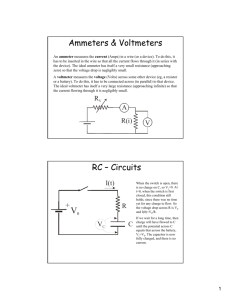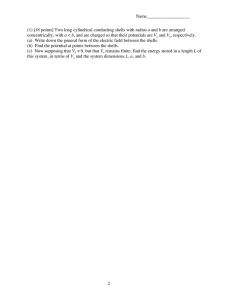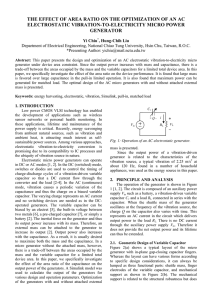Physics 305 Problem set 3 Due: Friday, Feb. 10
advertisement
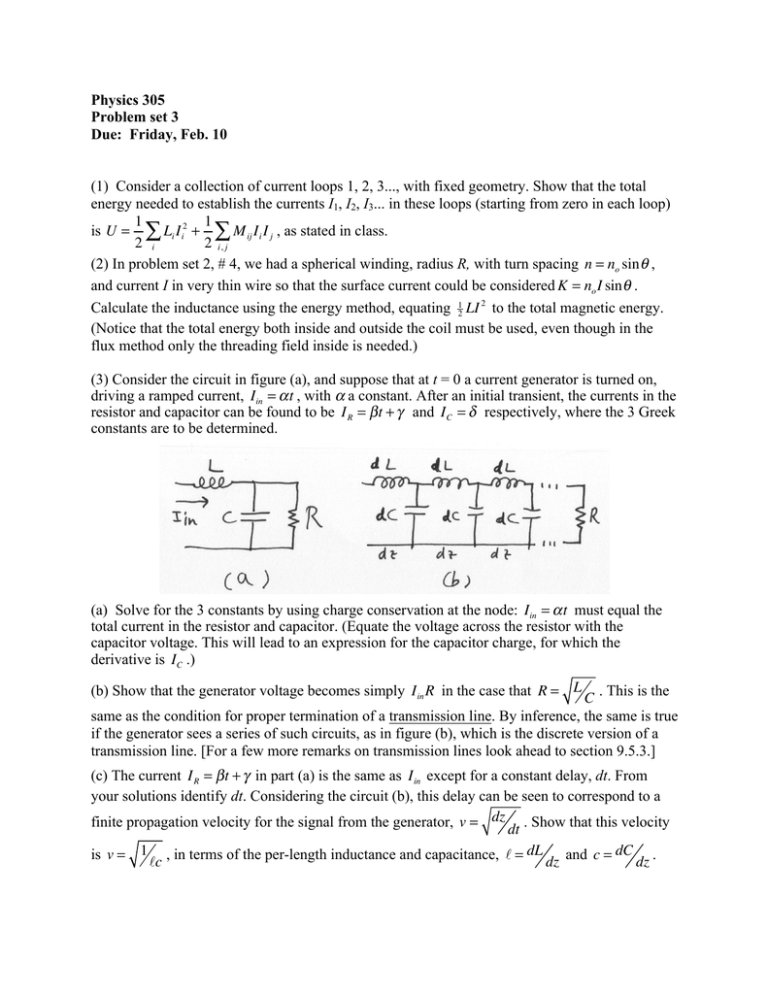
Physics 305
Problem set 3
Due: Friday, Feb. 10
(1) Consider a collection of current loops 1, 2, 3..., with fixed geometry. Show that the total
energy needed to establish the currents I1, I2, I3... in these loops (starting from zero in each loop)
1
1
is U = ! Li I i2 + ! M ij I i I j , as stated in class.
2 i
2 i, j
(2) In problem set 2, # 4, we had a spherical winding, radius R, with turn spacing n = no sin ! ,
and current I in very thin wire so that the surface current could be considered K = no I sin ! .
Calculate the inductance using the energy method, equating 12 LI 2 to the total magnetic energy.
(Notice that the total energy both inside and outside the coil must be used, even though in the
flux method only the threading field inside is needed.)
(3) Consider the circuit in figure (a), and suppose that at t = 0 a current generator is turned on,
driving a ramped current, I in = ! t , with α a constant. After an initial transient, the currents in the
resistor and capacitor can be found to be I R = ! t + " and I C = ! respectively, where the 3 Greek
constants are to be determined.
(a) Solve for the 3 constants by using charge conservation at the node: I in = ! t must equal the
total current in the resistor and capacitor. (Equate the voltage across the resistor with the
capacitor voltage. This will lead to an expression for the capacitor charge, for which the
derivative is I C .)
(b) Show that the generator voltage becomes simply I in R in the case that R = L C . This is the
same as the condition for proper termination of a transmission line. By inference, the same is true
if the generator sees a series of such circuits, as in figure (b), which is the discrete version of a
transmission line. [For a few more remarks on transmission lines look ahead to section 9.5.3.]
(c) The current I R = ! t + " in part (a) is the same as I in except for a constant delay, dt. From
your solutions identify dt. Considering the circuit (b), this delay can be seen to correspond to a
finite propagation velocity for the signal from the generator, v = dz dt . Show that this velocity
is v = 1 !c , in terms of the per-length inductance and capacitance, ! = dL dz and c = dC dz .
(4) Consider a parallel-plate capacitor with circular disks, radius a, being charged by thin wires.
The long, straight wires are connected to the outside of each plate at the center, and are aligned
perpendicular to the plates. Constant current I runs in each wire, charging the capacitor.
a) Find the displacement current density inside the capacitor, in terms of I and a.
b) Find the magnetic field at radius s < a, both inside and outside the capacitor.
c) Show that the difference in magnetic fields is consistent with the expected boundary
!
I #1 s &
"
condition, with a surface current density K = ± ŝ
running in each plate.
2! %$ s a 2 ('
d) Show that by continuity the current density found in part (c) corresponds to a uniform surface
charge on each plate, changing at a constant rate. Hint: consider the currents flowing in and out
of a thin circular ring, of thickness ds.
(5) Griffiths problem 7.40 (page 333)
(6) Griffiths problem 7.49 (page 337)

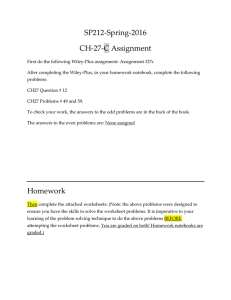



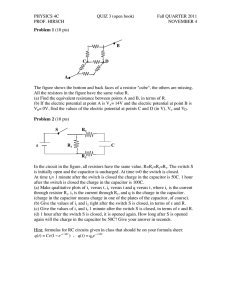
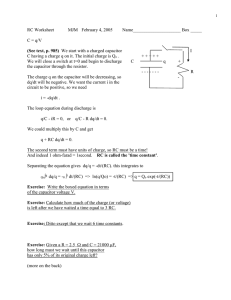
![Sample_hold[1]](http://s2.studylib.net/store/data/005360237_1-66a09447be9ffd6ace4f3f67c2fef5c7-300x300.png)
